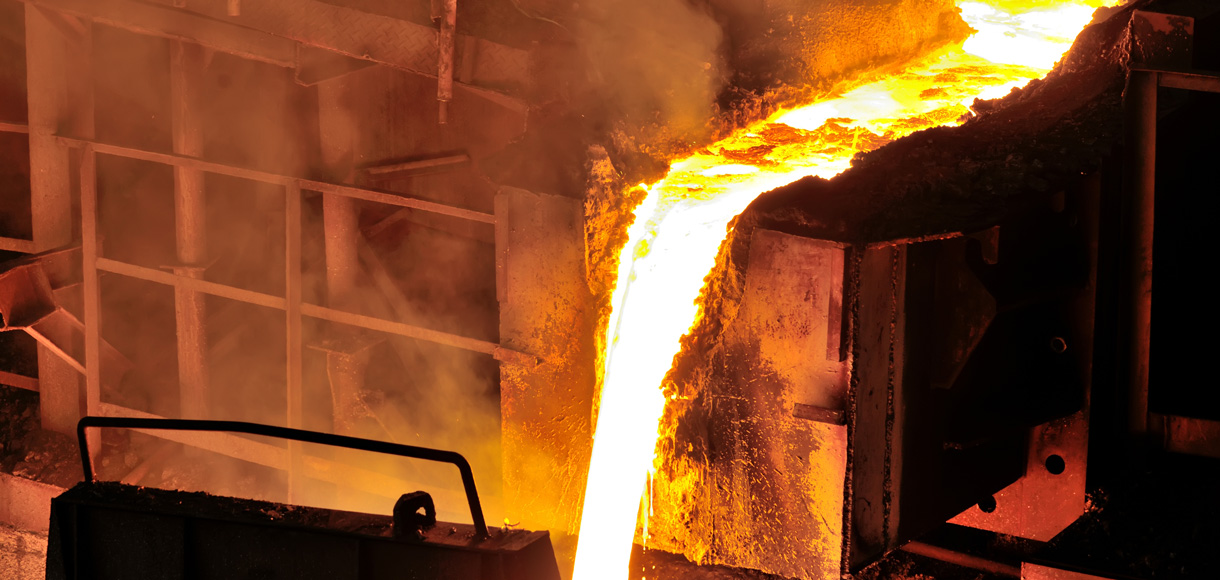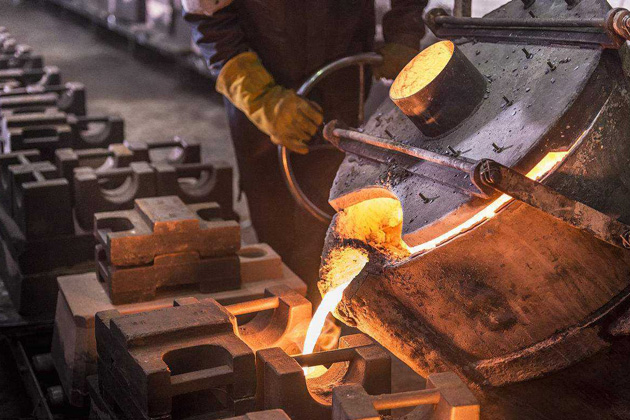Discover the Ingenious Techniques Utilized in a Metal Foundry for Superior Casting Results
In today's affordable production landscape, metal foundries are significantly adopting cutting-edge strategies to improve casting outcomes - Aluminum Foundry. Advanced computer system simulations permit exact modeling of molten metal behavior, while 3D printing enables rapid production of complicated molds. In addition, environment-friendly materials and automation enhance procedures. These advancements guarantee considerable improvements in performance and quality assurance. The influence of these technologies on sustainability and production techniques stays to be completely checked out.
Advanced Computer System Simulations in Metal Casting
Advanced computer system simulations have revolutionized the metal spreading process by boosting precision and effectiveness. These innovative devices permit designers to produce digital designs of actors parts, enabling them to anticipate the behavior and analyze of molten metal throughout the spreading stage. By imitating various parameters such as temperature, circulation price, and cooling rates, producers can recognize prospective issues before physical production starts.
This proactive technique minimizes waste and decreases costly errors, ultimately causing boosted item quality. Furthermore, simulations promote the optimization of mold and mildew styles, making sure that they satisfy the specific requirements of each task. The assimilation of computational liquid characteristics (CFD) and limited component analysis (FEA) more adds to the accuracy of these simulations, offering understandings that were previously unattainable. Therefore, advanced computer simulations have come to be an important component of contemporary metal foundries, considerably progressing the market's abilities.
3D Printing for Mold And Mildews and Patterns
3D printing has actually become a groundbreaking method for developing molds and patterns in the metal foundry sector. This innovation makes it possible for the quick production of complex geometries that typical production techniques have a hard time to achieve. By utilizing additive production, foundries can develop detailed layouts with reduced lead times and material waste. The capacity to generate molds on demand permits greater adaptability in style versions, promoting faster prototyping and adjustments.
Additionally, 3D printing can make use of a range of products, including plastics and metals, customized to particular casting needs. This versatility enhances the precision of molds, resulting in exceptional spreading outcomes with boosted surface coatings. In addition, the reduction in the number of parts needed simplifies setting up processes, additionally optimizing production effectiveness. As foundries remain to embrace 3D printing, they are positioned to redefine sector criteria, leading the way for advancement and enhanced efficiency in metal casting procedures.
Eco-Friendly Materials and Processes
As the metal foundry market encounters boosting stress to reduce its ecological footprint, the adoption of environment-friendly materials and processes has actually ended up being important. Shops are currently checking out sustainable alternatives to standard products, such as making use of recycled steels and bio-based binders. These materials not just reduce waste yet likewise reduced power consumption during production.
Additionally, developments in sand casting strategies have brought about the use of artificial sands that are much less hazardous to the setting. Shops are likewise executing innovative procedures like molten metal therapy that reduces emissions and improves the quality of cast items.
Water-based finishings have actually replaced hazardous solvents, promoting a much safer job environment. By incorporating these green practices, metal foundries can noticeably reduce their eco-friendly effect while keeping high-quality spreading results. This change not only profits the atmosphere yet also aligns with the growing customer need for lasting production solutions
Automation and Robotics in Foundry Procedures
While the metal foundry industry accepts technology, the integration of automation and robotics is transforming operations greatly. Automated systems improve processes such as mold making, metal pouring, and casting ending up, greatly improving effectiveness. Robotics facilitate the handling of heavy products, decreasing the risk of workplace injuries and guaranteeing safer environments.

Additionally, making use of automated directed vehicles (AGVs) enhances material transportation within facilities, ensuring prompt shipment of elements to suitable workstations. By implementing these technologies, foundries can adjust to varying demands with greater dexterity, ultimately causing improved success and competitiveness out there. As automation and robotics remain to advance, they hold the possible to redefine conventional foundry techniques and drive additional developments in casting techniques.
Real-Time Tracking and Top Quality Control Techniques
The innovations in automation and robotics have actually paved the way for a lot more advanced approaches to quality control in metal foundries. Real-time surveillance systems make use of advanced sensing units and data analytics to track vital parameters throughout the casting procedure. These systems continuously analyze variables such sites as pressure, temperature, and product composition, making it possible for prompt detection of discrepancies from developed standards.
Quality control techniques now include artificial intelligence algorithms that analyze historic data to forecast possible issues prior to they take place. This aggressive strategy reduces waste and enhances total production effectiveness. In addition, integrated feedback loopholes permit rapid modifications, guaranteeing that each spreading fulfills rigorous top quality requirements.
The execution of digital doubles-- online reproductions of physical assets-- has also changed quality control, enabling designers to imitate and maximize processes in real-time. Together, these cutting-edge techniques substantially improve the dependability and quality of castings, setting brand-new market criteria in metal foundry procedures.
Frequently Asked Inquiries
What Sorts of Metals Are Typically Cast in Foundries?
Generally cast steels in foundries include aluminum, iron, bronze, and brass. Each metal exhibits distinct properties, making them appropriate for various applications, such as automotive parts, equipment, and creative sculptures, boosting their convenience in production.

The length of time Does the Casting Process Commonly Take?
The spreading procedure commonly takes a number of hours to days, relying on factors such as the complexity of the mold, type of metal used, and air conditioning demands. Each phase influences the overall duration substantially.
What Precaution Are in Place for Foundry Employees?

Just how Are Problems in Castings Identified and Addressed?
Problems in spreadings are recognized via visual evaluations and non-destructive testing approaches. Once detected, foundry employees address them by refining processes, readjusting material compositions, and implementing corrective steps to ensure high quality and conformity with requirements.
What Is the Price Range for Metal Casting Services?
The cost variety for metal casting services usually differs in between $1 to $10 per extra pound, depending on aspects such as material type, intricacy of the style, and production volume, affecting general rates significantly.
In today's affordable production landscape, metal foundries are increasingly adopting cutting-edge techniques to enhance casting results. As the metal foundry industry encounters raising pressure to decrease its environmental impact, the adoption of environmentally friendly products and processes has actually become necessary. Foundries are currently checking out sustainable alternatives to conventional products, such as utilizing recycled steels and bio-based binders. By incorporating these environmentally friendly techniques, metal foundries can noticeably decrease their ecological influence while preserving top notch this page casting results. The developments in automation and robotics have paved the way for extra advanced techniques to find out high quality assurance in metal foundries.